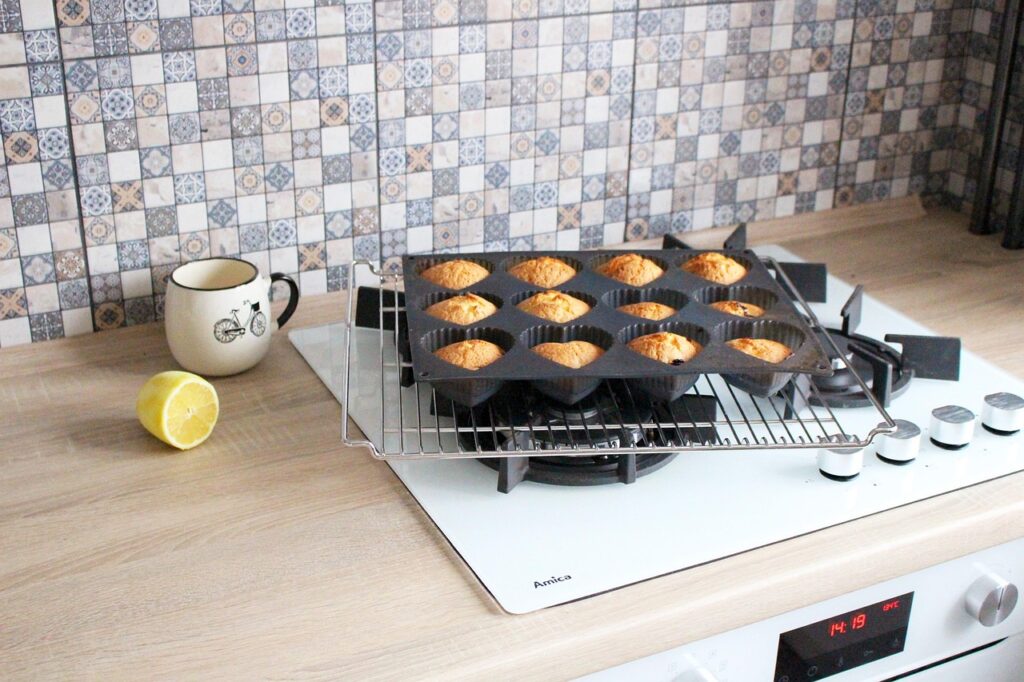Maintaining a healthy and vibrant garden takes time, dedication, and — most importantly — consistent watering.
However, with busy schedules or long trips away from home, keeping your plants properly hydrated can be a challenge. That’s where automatic watering systems come in. The good news? You don’t need an expensive, high-tech setup to achieve it.
This article explores how to automatically water your garden plants at low cost, using simple techniques and materials that are widely available.
Whether you’re growing vegetables in raised beds, flowers in pots, or a variety of plants in your backyard, there’s a budget-friendly solution that can make your garden care more efficient and worry-free.
Why Automating Your Garden Watering Makes Sense
Manual watering can be enjoyable and therapeutic, but it also comes with limitations. It requires daily attention, precision, and access to water at the right time — typically early morning or late evening. Missing just a few days during hot weather can cause stress to your plants or even lead to irreversible damage.
Automatic watering systems offer several clear benefits:
-
Time-saving: Watering is handled consistently, even when you’re busy or away.
-
Efficiency: Targeted systems reduce water waste by delivering moisture directly to plant roots.
-
Healthier plants: Regular watering schedules help avoid overwatering or underwatering.
-
Cost-effectiveness: With the right DIY approach, you can automate your watering for a fraction of the cost of commercial systems.
Understanding Basic Automatic Watering Methods
Before diving into setup options, it’s helpful to understand how basic automatic watering systems work. Most low-cost systems rely on gravity, timers, or capillary action to deliver water steadily over time.
Key types of systems include:
-
Drip irrigation systems
-
Soaker hoses
-
Plastic bottle systems
-
Wicking systems
-
Gravity-fed containers
Each method has advantages depending on your garden size, plant types, and local climate. The goal is to choose one that provides consistent moisture with minimal maintenance and energy use.
Drip Irrigation on a Budget
Drip irrigation is a popular choice because it delivers water directly to the base of each plant, reducing evaporation and water runoff. While professional drip systems can be costly, budget-friendly versions can be created at home using basic supplies.
You can build a DIY drip irrigation system using:
-
A large water container (like a barrel or jug)
-
Flexible plastic tubing or old garden hose
-
Drippers or pierced tubing to control flow
-
A simple timer (optional, but helpful)
Set the container on a raised platform to use gravity for water flow. Attach tubing with small holes near each plant and adjust placement for optimal coverage. This setup uses very little water and works well for both small and medium gardens.
If you want to automate further, affordable mechanical or battery-powered timers can be attached to your faucet or hose, releasing water at scheduled times without the need for manual input.
Soaker Hoses for Larger Beds
For larger garden beds, soaker hoses offer an effective, low-cost solution. These hoses are designed with tiny pores that slowly release water along their entire length. You simply lay the hose across your garden bed, connect it to a water source, and let it run for a set period.
While some soaker hoses are available commercially at a low price, you can also create one yourself using:
-
An old garden hose
-
A small nail or pin to poke holes every 10–15 cm
-
Duct tape to seal the far end of the hose
Once placed along your garden rows, turn on the water at low pressure and let the hose distribute moisture slowly. This method is particularly effective in flat areas with uniform planting and is great for flower beds, rows of vegetables, or perimeter plantings.
Reusing Plastic Bottles as Watering Tools
One of the simplest and most eco-friendly ways to automate watering is by repurposing plastic bottles. This method works best for potted plants, small garden beds, and individual crops like tomatoes or peppers.
Here’s how it works:
-
Take a 1- or 2-liter plastic bottle.
-
Poke 2–4 small holes near the bottom using a heated pin or needle.
-
Fill the bottle with water.
-
Bury it upside down near the plant base, leaving the bottom exposed for refilling.
Water will seep out slowly, hydrating the soil directly at the root zone over time. This method is incredibly cost-effective, reduces plastic waste, and allows for individual plant control.
You can also insert a small cotton wick into the bottle hole for wick-based watering, extending the release even further — ideal for indoor plants or smaller containers.
Wicking Systems for Indoor and Outdoor Plants
Wicking systems use the principle of capillary action to draw water from a reservoir into the soil as it dries. This approach is simple, low-cost, and works exceptionally well for container gardening — both indoors and outdoors.
To create a basic wicking system, you’ll need:
-
A water container (like a bucket or bottle)
-
Cotton rope or nylon cord
-
A plant pot or raised bed with well-draining soil
Insert one end of the wick into the water container and bury the other end 2–3 inches into the soil near the plant’s roots. The wick draws water into the soil slowly, keeping it consistently moist. This method is ideal for people who travel frequently or want to reduce the need for daily watering.
Some gardeners also build self-watering containers, where a lower reservoir supplies water through a wick system to an upper planting area. These containers can be made from repurposed storage bins, buckets, or even stacked plastic bottles.
Using Rainwater for Sustainable Irrigation
One of the most effective ways to keep costs low while automating garden watering is to use harvested rainwater. Rainwater is free, naturally soft, and better for plants than chemically treated tap water.
Here’s how you can set up a basic rainwater collection system:
-
Install a rain barrel beneath a roof gutter or downspout.
-
Fit the barrel with a spigot or hose connection near the bottom.
-
Elevate the barrel on bricks or a stand to improve water pressure for gravity-fed systems.
-
Attach your drip tubing or soaker hose directly to the spigot.
This setup can supply enough water for several days or weeks, depending on your barrel size and local rainfall. If combined with a timer or float valve, your rainwater system can function almost completely hands-free — all while reducing your water bill and environmental impact.
Basic Automation with Affordable Timers
To take your system to the next level, consider adding a low-cost water timer. These devices connect to outdoor faucets or hose lines and allow you to program watering intervals, duration, and frequency.
There are three main types of timers:
-
Mechanical timers: Operated by a simple dial, they’re inexpensive and reliable for short-term use.
-
Battery-powered digital timers: Offer more flexibility and multiple schedules.
-
Solar-powered timers: Use sunlight to charge and operate without batteries or wiring.
With timers, you can ensure your plants receive water early in the morning or late in the evening — the optimal times for reducing evaporation and maximizing absorption. Some advanced models even offer rain delay features, which pause watering during wet conditions.
While more sophisticated smart systems exist, a basic timer combined with drip irrigation or a soaker hose provides a perfect balance of automation and affordability.
Tips for Maximizing Water Efficiency
Even low-cost systems work best when paired with good gardening practices. To make the most of your automated setup, consider these additional tips:
-
Mulch your soil: A layer of organic mulch (like straw, bark, or leaves) retains moisture, reduces weeds, and protects the soil.
-
Group plants with similar needs: Place thirsty plants together so you can tailor watering accordingly.
-
Check for leaks: Monitor tubing and hose fittings to prevent unnecessary water loss.
-
Test flow rates: Adjust hole sizes or tubing layout to ensure even distribution across all plants.
-
Monitor soil moisture: Use a simple soil moisture meter or insert your finger into the soil to ensure your system is providing the right amount.
Taking a few minutes each week to inspect and adjust your watering setup will help you avoid issues and keep your garden thriving.
Common Mistakes to Avoid
While building your own automated watering system is rewarding, a few common mistakes can reduce its effectiveness:
-
Overwatering: Just because your system runs automatically doesn’t mean it needs to run daily. Overwatering can lead to root rot or nutrient leaching.
-
Incorrect placement: Make sure water is reaching plant roots — not leaves or walkways.
-
Clogged emitters: Fine holes in drip systems can clog with dirt or minerals. Clean components regularly.
-
Ignoring weather patterns: Turn off your system or use rain delay functions during wet periods.
-
Forgetting seasonal adjustments: As the seasons change, so should your watering frequency and duration.
By staying aware of these issues, your system will continue to operate smoothly and efficiently for months — or even years — to come.
Cost Comparison: DIY vs. Commercial Systems
To understand the value of DIY solutions, here’s a quick comparison table showing approximate costs for setting up a basic automatic watering system:
| System Type | Estimated Cost (USD) | Suitable For | Lifespan (With Maintenance) |
|---|---|---|---|
| DIY Drip System | $15–$30 | Raised beds, small gardens | 2–3 years |
| Soaker Hose (Homemade) | $10–$20 | Large beds, perimeter planting | 1–2 years |
| Plastic Bottle Irrigation | $0–$5 (reused items) | Pots, individual plants | 1 season |
| Wick System (DIY) | $5–$10 | Containers, indoor/outdoor pots | 1–2 years |
| Basic Timer (Battery) | $20–$40 | All systems | 2+ years |
By combining one or more of these systems, you can cover a wide range of watering needs in your garden for under $50, depending on the scale. For many home gardeners, this is a fraction of the cost of commercial smart irrigation setups, which can exceed $200 or more.
Final Thoughts: Affordable Automation for Every Gardener
Automating your garden watering doesn’t have to be complex or expensive. With a bit of creativity, some repurposed materials, and a basic understanding of how water moves through soil, anyone can build a reliable system that keeps plants healthy without constant attention.
Whether you’re a first-time gardener or an experienced grower looking to save time and money, these low-cost methods offer a sustainable way to maintain your garden — even during busy weeks or dry spells.
By starting small and gradually refining your system, you’ll gain confidence in managing water more efficiently and enjoy more vibrant, resilient plants as a result.

Hi there! My name is Ana Beatriz, I’m from Colorado, and I write this blog with great care during my free time.


